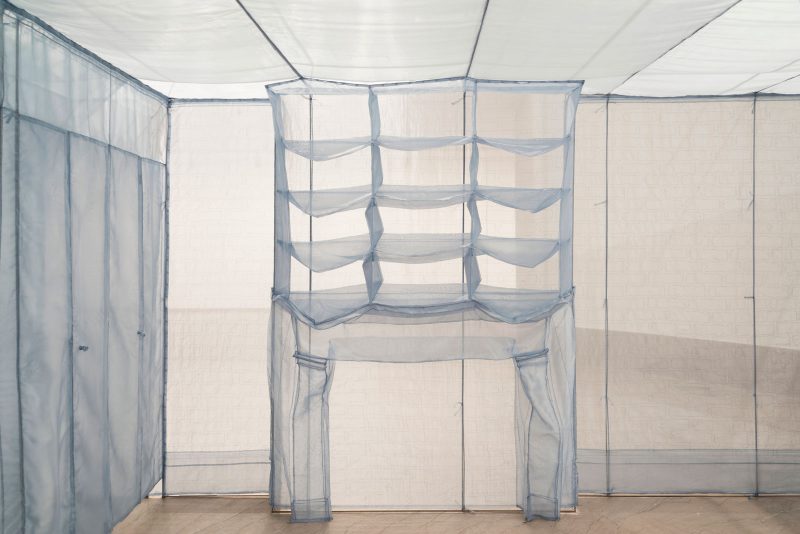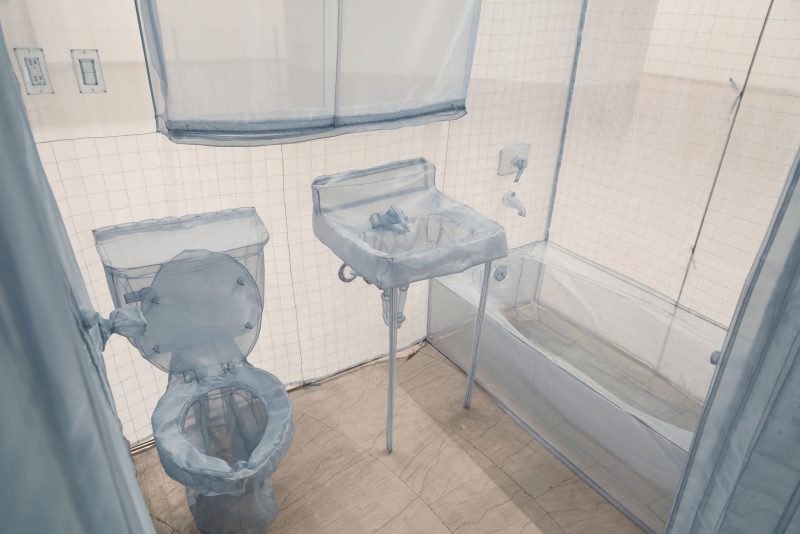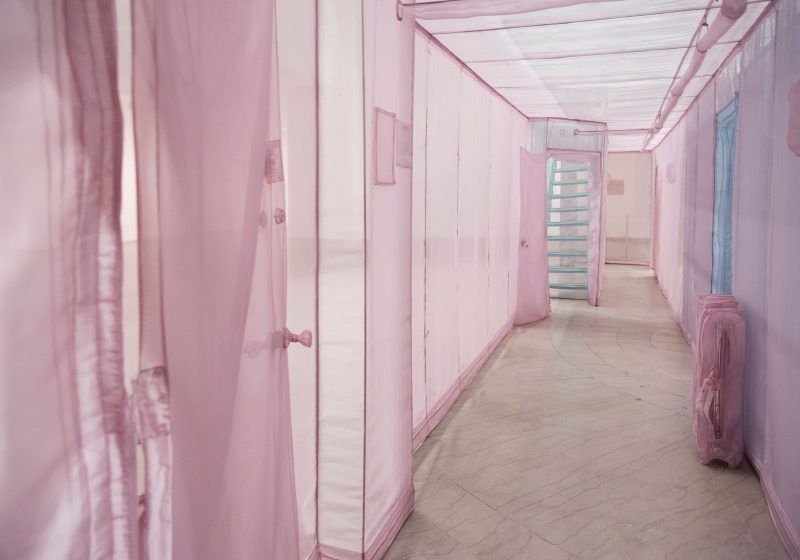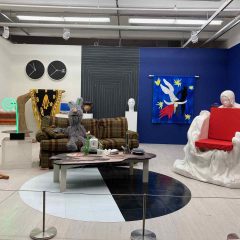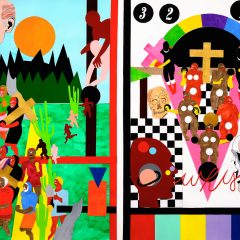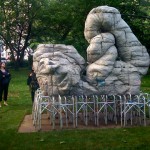You don’t know the essence of home until you are far away or your home is at the risk of being lost; that is the moment a house becomes a home. South Korean artist Do Ho Suh anchors his work within this very paradox; the importance of a place becomes realized only in retrospect. Throughout his itinerant career between multiple cities, Suh has attempted to capture the physical and emotional specificity of the home through ghostly nylon facsimiles of various places he has inhabited. Learning traditional Korean sewing techniques, Suh developed his trademark of painstakingly detailed architectural imitations, including particulars such as light bulbs and smoke alarms. Some of Suh’s pieces are anchored on the ground for visitors to enter; others float in the air like kites.
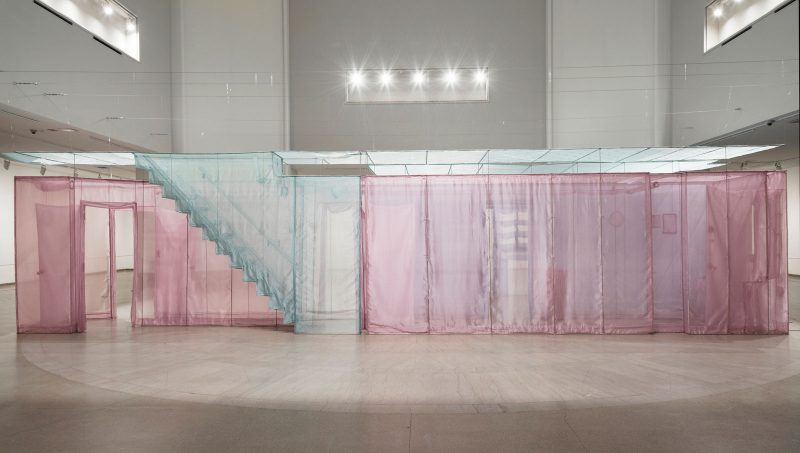
The Brooklyn Museum has recently acquired one of his pieces, The Perfect Home II (2003), which recreates the Chelsea apartment Suh rented while living in New York from 1997 to 2016. Color differentiates various architectural facets; the adjacent hallway leading into the apartment is pink, a flat plane of green demarcates the floor upstairs, and the actual living quarters are awash in blue. The structure invites different interpretations. On one hand, the piece evokes the texture and candy like colors of both a hanbok*, Korea’s traditional costume as well as cheap mass-produced Korean sundries, an aesthetic imprint of Suh’s birthplace unchanged from his many travels. On the other hand the use of three, color-coordinated elements suggests that home is not merely made up of the living space proper but of the ambient ecosystem— the hallway, a communal channel into the building, and the upper story— representing an unavoidable coexistence with neighbors. Like white light refracted into multiple colors, The Perfect Home II appears as memory refracted through Suh’s practice.
Despite the uncanny simulation, the nylon wilts along the stitched seams of walls and stairs and almost buckles completely when delineating substantial details like shelves and fireplace. Suh has mentioned he enjoys the portability of his nylon works, which he carries around in suitcases, and it’s possible the wilting distortions are an unavoidable consequence. Regardless of cause, these subtle and compounding imperfections evoke the vulnerability of memory, which not only deteriorates over time but with every subsequent recollection. This literal and metaphorical fragility compounds during the weekend viewing hours when the piece welcomes—or perhaps is invaded—by visitors.
Accompanying the piece is a short film where Suh explains the process behind more recent work, Rubbing/Loving (2017) also based on his Chelsea home. Describing a need for greater tactility, Suh decided against his usual nylon and instead covered the entire surface area of the apartment with paper and used colored pencils to create a rubbing of the interior, a laborious process that also highlights the passage of time. While undoubtedly effective, I prefer his nylon recreations. While both The Perfect Home II and Rubbing/Loving capture the past, the former also feels like a three-dimensional blueprint suspended in space. Not only do the lines fix a memory in place, but they also present a skeleton from which a home of wood and metal can be rebuilt in the future.
A little more about the artist Do Ho Suh: Born 1962 in Seoul, South Korea and with a career built between New York, Berlin, and his current residence, London, Do Ho Suh examines personal and cultural memory, identity, and the notion of home and subsequent upheaval through elaborate installations often in silk and nylon. Suh’s art oscillates between monumental political statements, like Floor (1997-200), and deeply personal, as with the subject of this review, The Perfect Home II (2003). His work has been exhibited in numerous museums worldwide and features in the collections of the Museum of Modern Art (NY), Tate Modern, Museum of Contemporary Art, Los Angeles, and the Whitney Museum to name a few.**
Do Ho Suh: A Perfect Home II is exhibited as part of the Brooklyn Museum’s One Brooklyn series. The show closes May 5th; the piece is open to public walkthroughs on weekends; other times it is viewable from the piece’s exterior only.
Footnotes and More Photos
*Hanbok is the traditional Korean costume.
**Do Ho Suh had a residency at the Fabric Workshop and Museum in 2004-5 . He showed work at both the FWM and PAFA. Read Libby’s 2005 post about the works.
